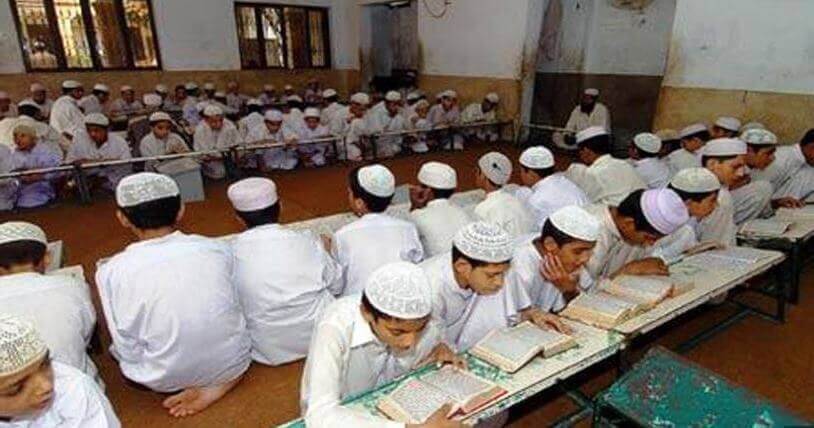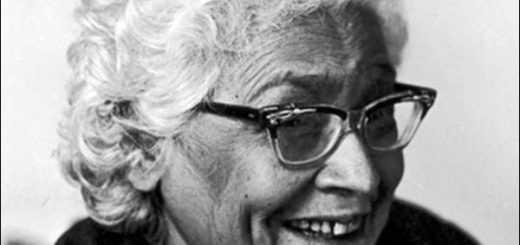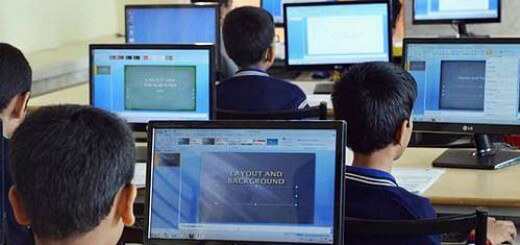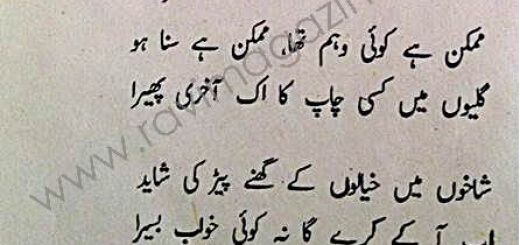Creation of Hindu ’Madrasas’ – By. R. Talib
(Text of a talk on “Saffronization of Indian Education” given at the YMCA, New Delhi)
I am neither an educationist nor an expert on Hindutva. But in the course of writing a book on Islam and Modernity, I have come across problems faced by Islam in its extremist manifestation, popularly termed fundamentalism – which in a sense justifies my speaking on the subject on the ’saffronization of education’ here today. The justification may not be immediately apparent. So, let me explain.
In the course of my research on Islam, I have realized that there are interesting parallels between on the one hand the Hindu fundamentalist’s attempt to reorient the syllabi and courses of our school system so as to make it reflect a respect for ancient Indian culture and learning, and on the other the academic situation that prevails in Pakistan with the support it officially gives to the ’madrasa’ system of education.
In much of my talk this morning, I shall place before you these parallels, these comparisons, deadpan and with as little comment as possible, leaving you to judge where our country might be headed – not perhaps in the immediate future, because it takes a while to dismantle the edifice we have inherited from the Nehruvian secular era, with its emphasis on developing a scientific temper, but in the not-so-distant future should the ideologues of Hindutva prevail in imposing their ill-conceived educational agenda.
Before I turn to this, my major theme of the day, let me make a couple of preliminary points. I would like to say first and foremost that religion here is not the issue. And yet, in a sense it is. I find the following extract from a letter published in the London daily, the Guardian, particularly significant. The anonymous letter-writer observes:
“As long as mankind remains in thrall to outdated beliefs in ‘gods’, there is no chance of peace on earth. All religions profess peace and love – yet they have been responsible for most of the bloodshed throughout the ages. Religions are relics of the dark ages. They foster hatred, enmity and bigotry and have no place in a modern, civilized society.”
We may not all agree with so sweeping a conclusion. But I would argue that the writer is at least partially right. Religion in the sense of a spiritual anchor is something that many in the modern world seem staunchly to yearn for, particularly in the developing countries unable to solve their bread-and-butter problems. But the kind of religion we yearn for is religion with an unfailing emphasis on social harmony between peoples.
This yearning for a return to old-fashioned religion is not surprising, given the materialist traumas of modernity. And, of course, there is an ethical dimension to religion besides the divisive one. But it is the use of religion for political purposes, particularly for narrow electoral ends, which the anonymous letter writer seems to have had in mind in reaching his nihilistic conclusion.
There is another important point we need to note. The political abuse of religion is a temptation to which all major faiths have at some time or other succumbed. History is witness to this fact – as much in the case of Judaism, as in that of Christianity and Islam. Hinduism was thus far thought to be a grand exception. But what we are witnessing in our still-largely secular country today is that this essentially non-dogmatic – and by and large tolerant faith, tolerant that is, in matters of creed, but highly oppressive and discriminating in the caste apartheid rampantly practised in it – is about to go down the same slippery slope.
So much for my introductory remarks. Now for the parallels between the Pakistani madrasa system and our federal minister Dr Murli Manohar Joshi’s vision of Hindutva-oriented education. If his confused efforts succeed, I fear we will end up duplicating the Pakistani educational experience here through the fostering of a madrasa mindset among our people at the very basic level of mass schooling. I would particularly like to stress here that the cause – a religion-based education – and the consequence – the development of closed minds – are not as removed from each other as might appear at first sight.
Dr Joshi’s agenda, as I see it, has two clear objectives:
- To rewrite our textbooks in such a manner that we give equal emphasis, on the one hand, to well-documented facts of history and, on the other, to myths from our glorious past, making no distinction between the two so that myth and fact become ultimately part of a seamless whole; and,
- To expose our students to the ‘scientific’ achievements of the past without submitting them to the scrutiny of reasoned discourse that has been the hallmark of science since it was liberated from the clutches of medieval superstition in the 14th/15th centuries.
I now turn to the similarities between Dr Joshi’s efforts to reorient the history and science courses and textbooks in our governmental schools and the academic climate, not to forget the mindsets, that generally prevails among Pakistan’s professional elite and prestigious scientific establishments as a result of its reliance at very the basic level of education on the madrasa system.
Let me begin this segment by drawing your attention to an interesting article that appeared in the New York Times three months ago and in which the writer, one Somini Sengupta, described a boys’ school run by the RSS (a ’Hindu madrasa’ so to speak) just outside Delhi.
The 300 students of the school, she wrote, belonged mostly to dalit or tribal children from Madhya Pradesh and the Northeast whom the Hindutva brigade wanted to see saved from Christian conversions.
Some of the inmates are orphans and therefore housed, fed and clothed free of charge, furnishing captive groups of young scholars to whom the RSS – the Rashtriya Swayam Seva Sangh, the ideological parent of the BJP – could administer its ideological indoctrination.
Incidentally, these schools, called ’shishu mandirs’, and other primary and secondary schools run by the RSS through its educational charity, the Vidya Bharati, are generously funded by Hindu non-resident Indians from abroad.
According to Ms Sengupta, there are today some 20,000 such low-cost schools serving 2.4 million children across the country. And about 1000 such new schools are added each decade – a growth rate that would be the envy of other educational charities.
Apart from the standard educational syllabus, there is emphasis here on building the bodies of the boys with rigorous insistence on physical exercise and yoga – with due importance to the chanting of Hindu prayers in Sanskrit. So far so good – and quite unexceptional.
But what of the education administered to these young minds? I can do no better than paraphrase the content of Ms Sengupta’s reportage:
– The students – she says – are taught to give up their meat-eating ways and to become vegetarians: unobjectionable again as vegetarianism may well be the wave of the future.
– But, as part of the extra-curricular routine, the students are ‘regaled’ (her word not mine) with tales of brave Hindu warriors and saints, besides being encouraged to participate in quizzes in which questions and answers focus on the ‘ravages’ wrought by Muslim rule in India with particular reference to Emperor Babur’s alleged role in the demolition of the Hindu temple at Ayodhya – the source, you will recall, of the violent communal strife of the 1980s caused by the demolition of Babur’s mosque. (Incidentally, I have often wondered since whether this deed, as an act of religious vandalism with the additional cost of the loss of innocent lives, can be characterized as different from the destruction of the Bamiyan Buddha statues by Taliban fanatics in Afghanistan 20 years later?).
– The students are taught further that Lord Rama was born precisely “888,000 years ago”. The source for this ’fact’? Why of course the Hindu texts of astrology!
Ms Sengupta ends her description of the activities of these schools with a pointed question: Critics may well ask, she observes, whether such schools are not in fact ’madrasas of the Hindu right’?
So much for what a foreign correspondent observed of the existing schools run for the children of the poor by the RSS, conveying to all who wish to listen that ‘the saffronization of education’ is not just coming; it is already here – albeit limited at present to a largely ignored segment of the population but one which includes vast numbers of the poor who cannot afford the costs of private schools.
Let me now turn to an indigenous and secular response to Dr Joshi’s ’saffronized’ system. A husband-and-wife team of Nehru University historians, Professors Mridula and Aditya Mukherjee, have put together a compilation of articles and comments appearing in our newspapers during the peak of the controversy.
In their introduction, the Mukherjees deal with the case made out by the saffron camp against the secular historians who are contemptuously labelled “the children of Marx, Macaulay and Madrasa” and “the enemies of Indianization”. In support of their criticism against the RSS’ band of historians, they cite the following tendencies from textbooks now routinely prescribed in the Vidya Bharati schools:
– Mythological religious figures are treated as though they are characters from history and silly conclusions are drawn such as one claiming that Emperor Ashoka’s advocacy of ’ahimsa’ spread “the cult of cowardice in India” – whatever that may mean.
– A-historical judgements are perpetrated such as the one reached by Prof Oak of notorious memory that Delhi’s Qutub Minar was built by the Hindu king Samudragupta, not the Muslim king of the slave dynasty, Qutubuddin Aibak. Or that the Taj Mahal is a medieval Indian temple, not the ’monument of love’ created by emperor Shahjahan.
– It is, however, the following conclusion – from the history of our own times – which takes the cake: India’s ’freedom struggle’, according to these historians, was not so much a movement for independence from the British as a religious war against the Muslims.
Apart from criticizing saffronized scholarship for its multiple distortions of Indian history, the Mukherjees quote from a statement made by the then RSS chief, K S Sudarshan, in a party journal, the Organizer, about the so-called scientific achievements of ancient India. Accusing the ’anti-Hindu Euro-Indian’ historians of bias against ’Vedic maths’, Sudarshan went on to claim that our ancients “knew all about nuclear energy” and that the Sage Bharadwaja and Raja Bhoj not only described the construction of aeroplanes but discussed “details like what type of planes would fly at what height, what kind of problems they might encounter, and how to overcome those problems”.
It is time we now turn to the comparable situation in the Pakistani madrasa system. This comparison is not as far-fetched as it might seem: I firmly believe that if ever a Hindutva-dominated ethos prevails in India, it will be at the cost of making our country a mirror image of Islamic Pakistan.
An eminent Islamicist, Andrew Rippin, has pointed out that at the turn of the 19th/20th centuries there lived in Egypt a secondary school teacher, named Tantawi Jawhari. Between the years 1923 and 1935, he wrote a 26-volume work entitled ’Jewels in the interpretation of the Quran’ – a book which, he says, was typical of such writing at the time in the Middle Eastern countries.
One of the two themes Tantawi dwells on with great enthusiasm in these books is that the Quran contains within it an explanation of the scientific workings of the world. Allah, he says, would not have revealed the Quran had he not included in it everything that people needed to know; science being a necessity of life in the modern world, it is not surprising to find all of science in the Quran provided of course the Holy Book is properly understood.
And here’s a story from the Pakistani saga which brings things up to our times. Many of you may have heard of Dr Pervez Hoodbhoy. He is an eminent nuclear scientist who held at one time senior teaching and research appointments concurrently at MIT in the US and at Pakistan’s prestigious Quaid-e-Azam University.
Dr Hoodbhoy, it may be recalled, was constantly at odds with many members of his country’s scientific community; however, no government could afford to dispense with his services because of his usefulness to their research programmes.
In his slim book, Islam and Science, published by Zed Press in 1991, Pervez Hoodbhoy bitterly criticizes what passes off as ’Islamic science’ in Pakistan. His criticism is aimed in particular at the obscurantist theories put out by some of his colleagues in its scientific establishment. I reproduce here some of the sharpest attacks he makes in the book.
Can there be an Islamic Science, he asks at the head of Chapter 7, and answers the question thus:
– No there cannot be an Islamic scientific explanation of the physical world (just as, he goes on to add, a little later, there cannot be a Marxist or socialist science). Attempts to create such a civilizational bogey either in the Islamic world or under successive Communist regimes, he says, not only failed; they were a wasted effort.
– His trenchant remarks on the work of a particularly highly placed Pakistani scientist are especially noteworthy. The worthy gentleman’s name (by a strange coincidence) is Dr Safdar Jang Rajput who held the position of a senior scientist with the country’s Defence Science and Technology Organization (DESTO).
As Hoodbhoy narrates it, Dr Jang Rajput contributed a paper to an official journal in which he sought to make a ’scientific’ case for the existence of ’jinns’ (or fiery spirits mentioned in the Quran). Dr Hoodbhoy’s caustic comments in this learned-journal article are worth paraphrasing as they appear in the book:
– God made jinns out of fire at the time He made man out of clay [or so says the Quran]. For Dr Rajput, these fiery spirits are a living reality and clearly something with which he is deeply preoccupied … And the summary of his principal results in ’jinnology’ is as follows:
“It is highly probable that the origin of jinns is methane gas, together with other saturated hydro-carbons, because these yield a smokeless flame upon burning. This conclusion [observes Dr Rajput] is predicated on the known fact that God made jinns out of fire, together with the known fact that no jinn emitting smoke has ever been seen”.
Need one say any more about the Pakistani concept of science or, for that matter, about Dr Joshi’s vision of education in India?














